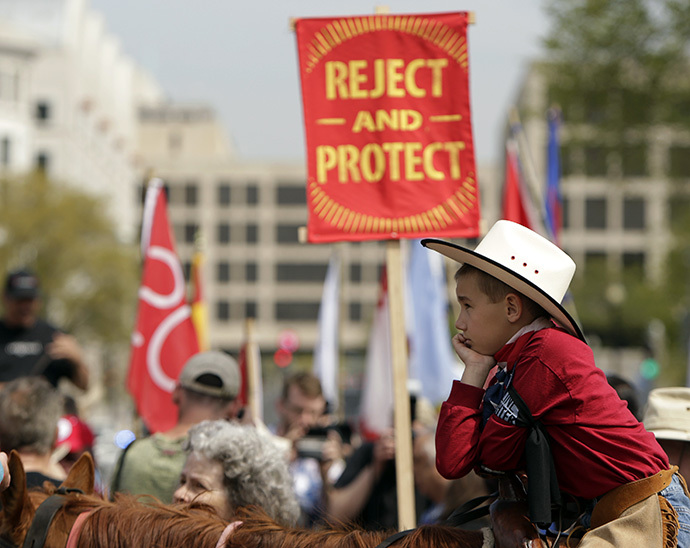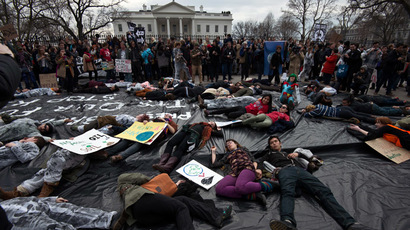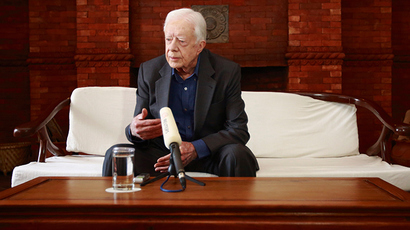‘Horrible’ pipeline defects prompt new rules for Keystone XL construction

Bad welds, dents and damaged coatings discovered at the southern leg of the Keystone XL pipeline have led to safety regulators imposing two extra conditions on the implementation of the project’s northern segment.
The two new conditions have been added to a list of 57, which
project implementers, TransCanada Corp, agreed to three years
ago, AP reports. The federal Pipeline and Hazardous Materials
Safety Administration has thus amended the environmental impact
statement on Keystone XL released by the State Department in
January.
One condition obliges TransCanada to adopt a quality management
program to ensure "this pipeline is — from the beginning —
built to the highest standards by both Keystone personnel and its
many contractors." Another one requires the quality of the
construction work to be assessed by a third-party contractor
chosen by the government agency.
The defects that prompted the extra rules have been found at a
segment of the pipeline that runs from Oklahoma to the Texas Gulf
Coast. They were outlined by the pipelines safety agency in
warning letters it sent to TransCanada in September 2013.
"From the start of welding, TransCanada experienced a high
weld rejection rate," one of the letters said, specifying
that over 72 percent of welds required repairs during one week.
Another letter spoke of dents in pipelines and also damaged
coatings, which resulted in the pipeline being excavated in 98
places to make repairs.
The pipeline safety agency understood the failures stemmed from
TransCanada hiring staff lacking the necessary experience and
wasn’t always able to implement approved pipeline construction
procedures.

The weld failure rate has been described as "horrible"
by Robert Bea, professor emeritus of civil and environmental
engineering at the University of California, Berkeley, who likens
safety requirements for pipelines to those for a nuclear power
plant.
"The level of defects is indeed cause for alarm and
indicative of something that is going on in the Keystone
organization that isn't satisfactory," Bea told AP.
TransCanada has defended itself by saying it discovered and fixed
all of the defects itself and by cautioning against drawing
parallels between construction of the pipeline’s southern leg and
its northern stretch, which is to carry oil from Alberta, Canada,
to Nebraska and is still awaiting approval by the White House.
"TransCanada had identified and addressed these issues prior
to any product being introduced into the pipeline and reported
them voluntarily" to the government, Davis Sheremata, a
spokesman for TransCanada said.
The Keystone XL pipeline project has been a highly controversial
one with supporters lauding it for the creation of thousands of
new jobs and with the US gaining more energy independence, while
opponents, citing environmental concerns, say tar sands oil is a
particularly “dirty” type of fuel.
In late April, Washington DC witnessed a massive protest against the Keystone XL pipeline,
when thousands participated in a six-day event “Reject and
Protect”, urging President Barack Obama to ditch the project.
The Obama administration announced on April 18 it was delaying a decision on the Canada-to-Texas
pipeline, in order to give federal agencies more time to assess
the proposed project. The future of Keystone XL remains uncertain
until after November’s mid-term elections.














